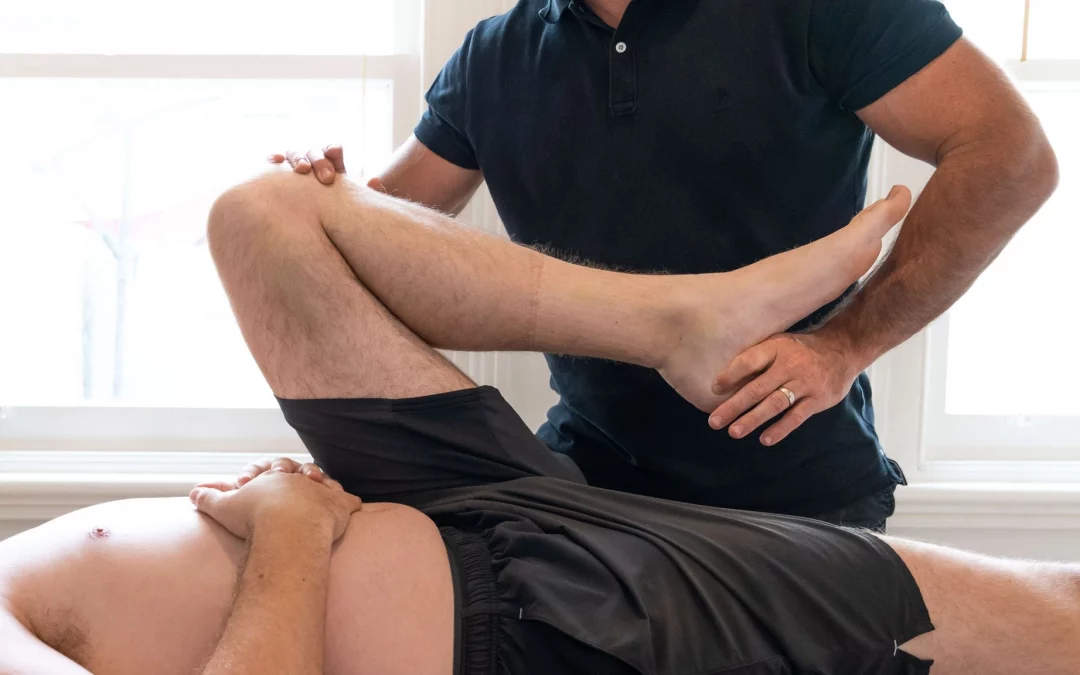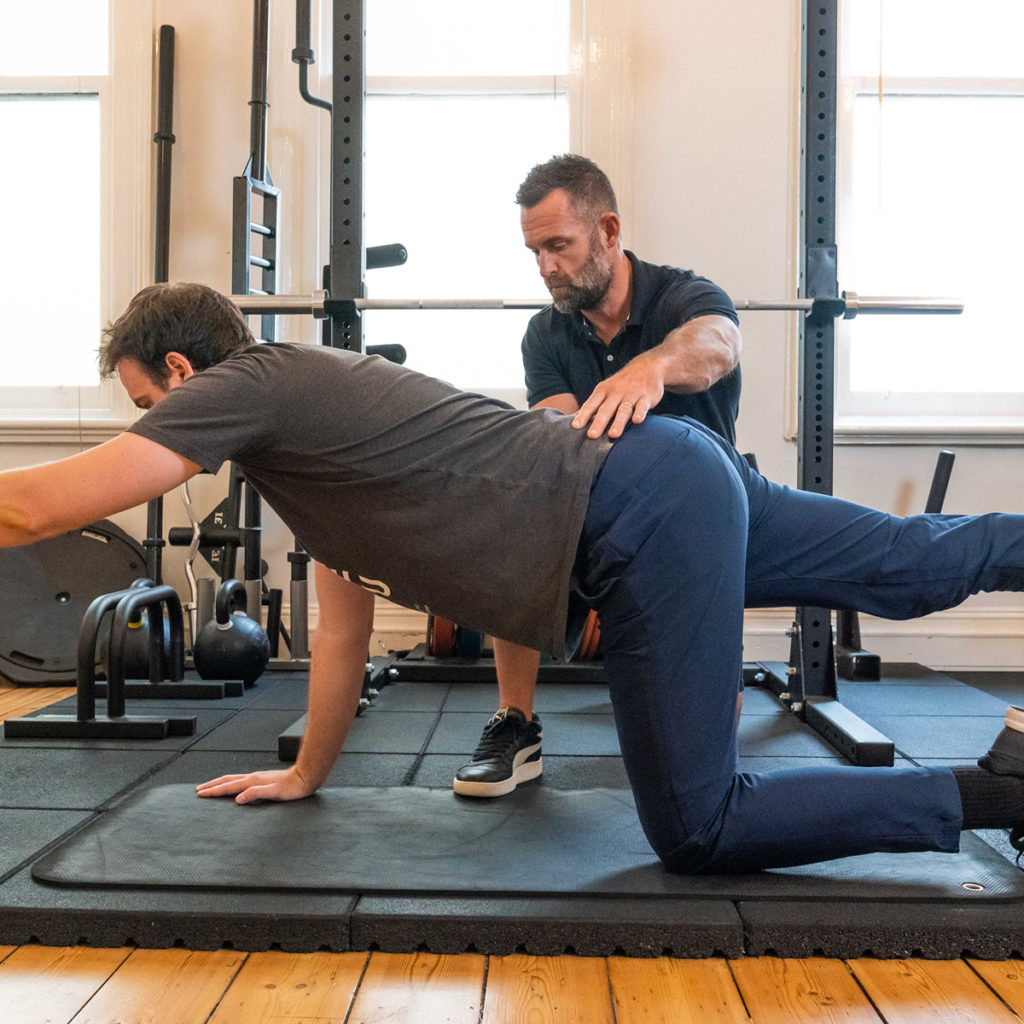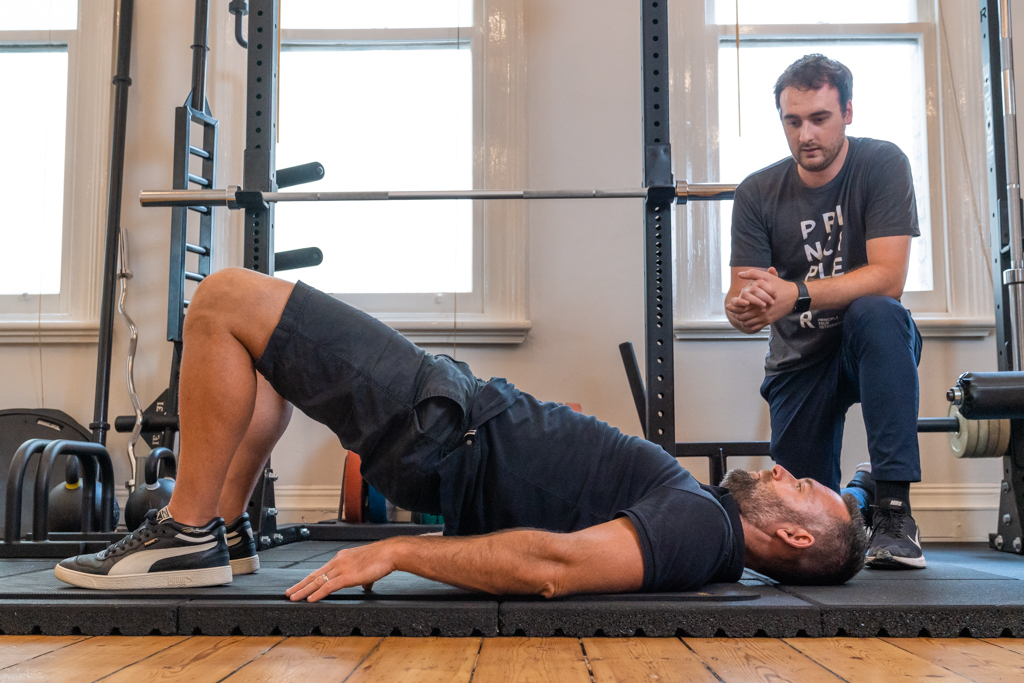Can Osteopathy Help With Greater Trochanteric Pain Syndrome (GTPS)?
Table of Contents
- Introduction
- What Is Greater Trochanteric Pain Syndrome? 2.1 Symptoms and Diagnosis 2.2 Causes and Risk Factors
- Osteopathic Treatment for GTPS 3.1 Manual Therapy to Relieve Pain and Improve Mobility 3.2 Exercise Rehabilitation and Tendon Loading 3.3 Strength & Conditioning for Pelvic and Hip Stability
- What Does the Research Say?
- A Whole-Body Approach to Hip Pain
- Why Choose Principle Four Osteopathy in Melbourne CBD?
- FAQs About GTPS and Osteopathy 7.1 What is the difference between GTPS and hip bursitis? 7.2 Can osteopaths treat long-standing GTPS? 7.3 Is walking or exercise safe with GTPS? 7.4 Do I need a scan before treatment?
- Author
Introduction
Greater Trochanteric Pain Syndrome (GTPS) is a common cause of lateral hip pain, especially in middle-aged women and runners. It often involves irritation of the gluteal tendons and nearby bursa at the outside of the hip. Pain can interfere with sleep, walking, and exercise, and is often misdiagnosed or mistreated.
At Principle Four Osteopathy in Melbourne CBD, we provide evidence-based management for GTPS using a combination of manual therapy, exercise rehab, strength programming, and lifestyle support. Our goal is not just to reduce pain, but to restore movement and prevent recurrence.
What Is Greater Trochanteric Pain Syndrome?
GTPS refers to pain in the soft tissues around the greater trochanter of the femur (outer hip bone), particularly involving:
- Gluteus medius and minimus tendons
- Trochanteric bursa
- Iliotibial band
2.1 Symptoms and Diagnosis
- Pain on the outside of the hip, especially with lying, walking or climbing stairs
- Tenderness over the greater trochanter
- Pain with prolonged sitting, standing or crossing legs
- Often worsens at night, particularly when lying on the affected side
GTPS is diagnosed based on clinical examination; imaging is only used when pain persists or to rule out other causes.
2.2 Causes and Risk Factors
- Tendon overuse or compression
- Poor gluteal strength or pelvic stability
- Sudden change in activity level
- Biomechanical issues such as altered gait or leg length difference
- Common in women aged 40–60
Osteopathic Treatment for GTPS
3.1 Manual Therapy to Relieve Pain and Improve Mobility
Osteopaths use hands-on techniques to ease muscle tension, improve joint mobility, and reduce tissue sensitivity:
- Soft tissue therapy for gluteals, ITB and TFL
- Hip and lower back mobilisation
- Myofascial release techniques
- Dry needling when appropriate
These treatments aim to desensitise the area and prepare the body for movement rehab.
3.2 Exercise Rehabilitation and Tendon Loading
Active rehabilitation is the cornerstone of long-term recovery. Osteopaths will guide you through:
- Isometric exercises to reduce pain and initiate tendon loading
- Gluteal strengthening and control drills
- Pelvic and trunk stability training
- Gait and movement pattern retraining
3.3 Strength & Conditioning for Pelvic and Hip Stability
Once pain is under control, progressive strength work supports full recovery and prevents recurrence:
- Resistance training for glutes and hips
- Functional exercises tailored to your lifestyle or sport
- Return-to-activity planning (e.g. running, lifting, walking)
What Does the Research Say?
GTPS responds best to load management and progressive exercise therapy. Manual therapy may offer short-term relief, but exercise is essential for long-term outcomes.
A study by Mellor et al. (2018) showed that a physiotherapist-led exercise and education program was more effective than corticosteroid injections or wait-and-see approaches for GTPS.
References:
- Mellor, R. et al. (2018). Education plus exercise versus corticosteroid injection for gluteal tendinopathy: a randomized clinical trial. BMJ.
- Grimaldi, A. (2011). Assessing and managing tendinopathies of the hip and pelvis. British Journal of Sports Medicine.
A Whole-Body Approach to Hip Pain
At Principle Four Osteopathy, we go beyond the symptom. Our assessment includes:
- Lumbar spine, pelvis and hip joint mobility
- Foot, ankle, and gait mechanics
- Ergonomic and activity-related contributors
- Footwear and movement habits
We create a personalised plan to reduce flare-ups, improve function and build resilience.
Why Choose Principle Four Osteopathy in Melbourne CBD?
Located at Level 4, 178 Collins Street, our clinic provides:
- Expertise in hip, tendon, and overuse injuries
- Individualised manual therapy and rehab plans
- Integration of workplace and lifestyle advice
- Supportive care for people returning to work, sport, or daily activity
We’re here to help you move freely, sleep better, and feel stronger.
FAQs About GTPS and Osteopathy
What is the difference between GTPS and hip bursitis?
GTPS includes tendon involvement, whereas bursitis refers only to inflammation of the bursa. Most cases of “bursitis” also involve gluteal tendons.
Can osteopaths treat long-standing GTPS?
Yes. We help manage chronic cases through gradual tendon loading, strength work and education.
Is walking or exercise safe with GTPS?
Some activity is usually safe and beneficial. Your osteopath will guide you on what to avoid and how to reintroduce movement safely.
Do I need a scan before treatment?
Not usually. Diagnosis is clinical. Imaging is recommended only if symptoms persist or don’t improve with treatment.
Author
Heath Williams
Principal Osteopath | Workplace Consultant | Strength Coach
Heath specialises in treating tendon and overuse injuries through a blend of manual therapy, clinical rehab, and long-term performance strategies at Principle Four Osteopathy in Melbourne CBD.
Internal Links:



